Scientific name Canis lupus familiaris Origin Wales, United Kingdom | Rank Breed | |
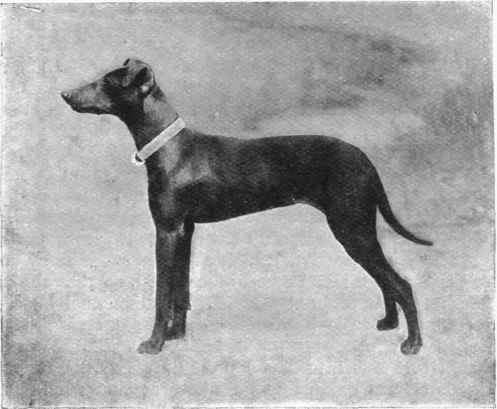 | ||
Similar Manchester Terrier, English Toy Terrier, English White Terrier, Toy Manchester Terrier, Old English Terrier | ||
The English Black and Tan Terrier is an extinct species of dog that was drawn into The Kennel Club as the Welsh Terrier and that remains extant outside of the Kennel Club as a "Fell Terrier".
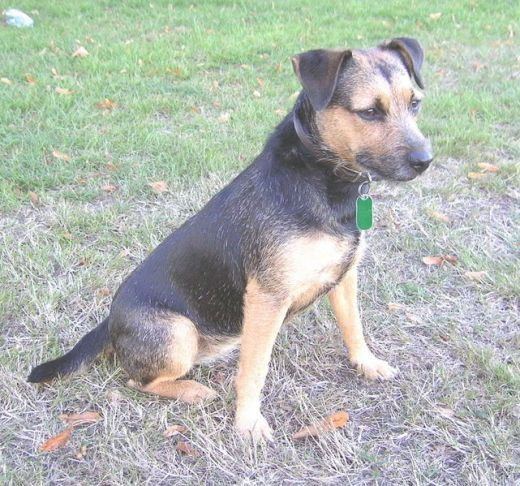
History
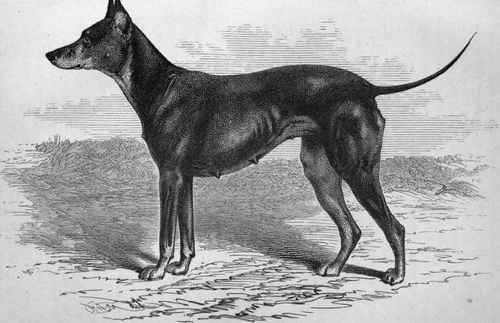
Working Fell Terriers (non-Kennel Club working terriers from the rocky Lakeland Fells [1] region of the UK) have always been quite variable in terms of size and shape, but have always been colored terriers (tan or black or black and tan), as opposed to the white-coated "foxing terriers" preferred in the south of England. Today, black and tan Fell Terriers are sometimes referred to as "working Lakelands" or Patterdale Terriers or simply as "black and tan" terriers.

With the rise of dog shows in the 1860s, a race began to give every visually distinctive type of dog a name and "improve" it through selective breeding, and terriers were at the very top of breed fancy concerns. From the colored rough-coated Fell Terriers of Cumbria and the Scottish Borders were developed several Kennel Club breeds, including the Lakeland Terrier, the Welsh Terrier, the Border Terrier and the Manchester Terrier.
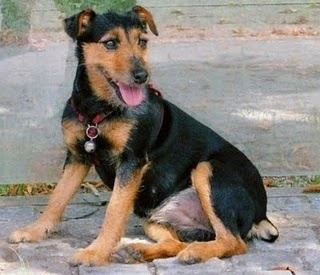
In the rush to create and claim new breeds, competing groups of dog breeders sometimes came up with different names for the same dog, and it was very common for entirely fictional breed histories to be knitted together as well—all part of a campaign to declare a new breed and create a bit of personal distinction for a dog's originator (to say nothing of sales).
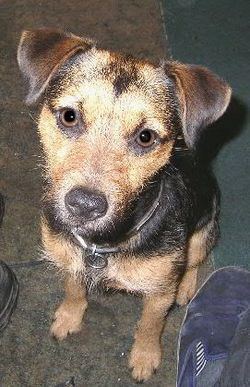
In the early 1880s, a group of English Kennel Club breeders decided to embrace a rather ponderous name and an incredible assertion for the brown and black working terriers of the North: they were, they asserted, "the root stock" of all terriers in the British Isles, and they were to be called the "Old English Broken-Haired Black and Tan."
The Welsh were outraged to have the English bring down a few of "their" dogs and claim they were an "Old English" anything. These were Welsh dogs, and the Welshmen moved quickly to establish that fact. The Welsh got organized quickly, and in 1884 they held the first dog show with classes just for Welsh Terriers in Pwllheli, North Wales with 90 dogs in attendance—a rather impressive opening shot in what was to be a brief, but furious, "terrier war." (McLennan, 1999 | Burns, 2005)
For their part, proponents of the "Old English Black and Tan" moniker could not seem to coalesce into a real club; in fact they could not even agree on a name for their supposedly "Old English" breed. Some called it the "Old English Broken-Haired Black and Tan Terrier," some the "Old English Wire Haired Black and Tan," some the "Broken-Haired Black and Tan," and some just "Black and Tan"—a color-description that has been used about as often as "white dog" or "yellow hound".
Whatever they might have called the dogs, this new Kennel Club "breed" appears to have been a put-up job consisting of a mix of terrier types that would not breed true. In 1885 a survey of the winning dogs in the ring found that all of them were, in fact, first generation dogs, i.e. not Black and Tans out of Black and Tan sires and dams, but Black and Tans produced out of crosses with other breeds. For example, the winner of the first show in 1884 was a dog named Crib that was a cross between a blue-black rough terrier (what might be called a dark Border Terrier today) and a famous smooth fox terrier owned by L.P.C. Ashley called Corinthian.
In 1885, the Kennel Club took a Solomonic approach to the name and breed standard for the dog, featuring both dogs at their 1885 show. On April 5, 1887, however, because the English could not get organized, they were dropped from Kennel Club listings, and the new "Welsh Terrier" breed was born, perhaps propelled forward in popularity by the rise of David Lloyd George, the son of a Welsh cobbler, who himself had risen from humble origins to stand should-to-shoulder with the gentry.
The notion that the "Black and Tan" terrier is now "extinct" is due almost solely to the existence of a book by Vero Shaw entitled "The Illustrated Book of the Dog." Printed in 1881, right at the beginning of the "terrier wars," this book contains about 100 chromo-lithograph plates and engravings of dog breeds that were, at the time of publication, being put forth as distinct entities. Shaw included the "Black and Tan" as well as another dog soon to pass into extinction (the English White Terrier), betting that the political machinations of English Kennel Club dog breeders would prevail. (McLennan, 1999 | Burns, 2005) He was wrong, and after roughly 20 years the two breeds became extinct.
